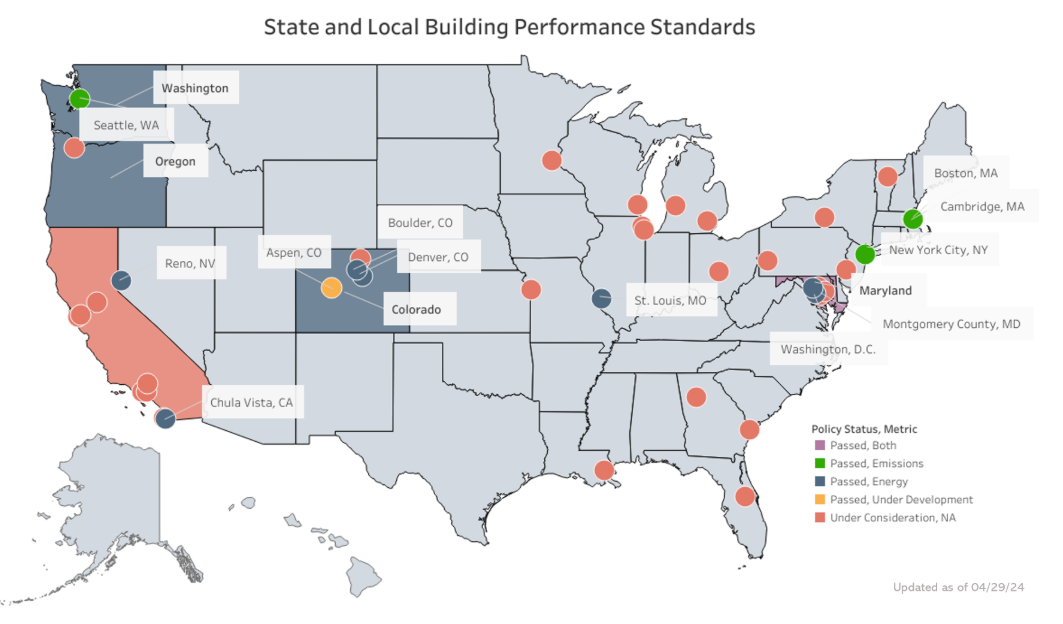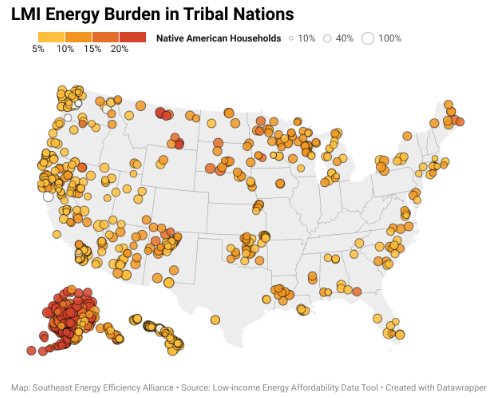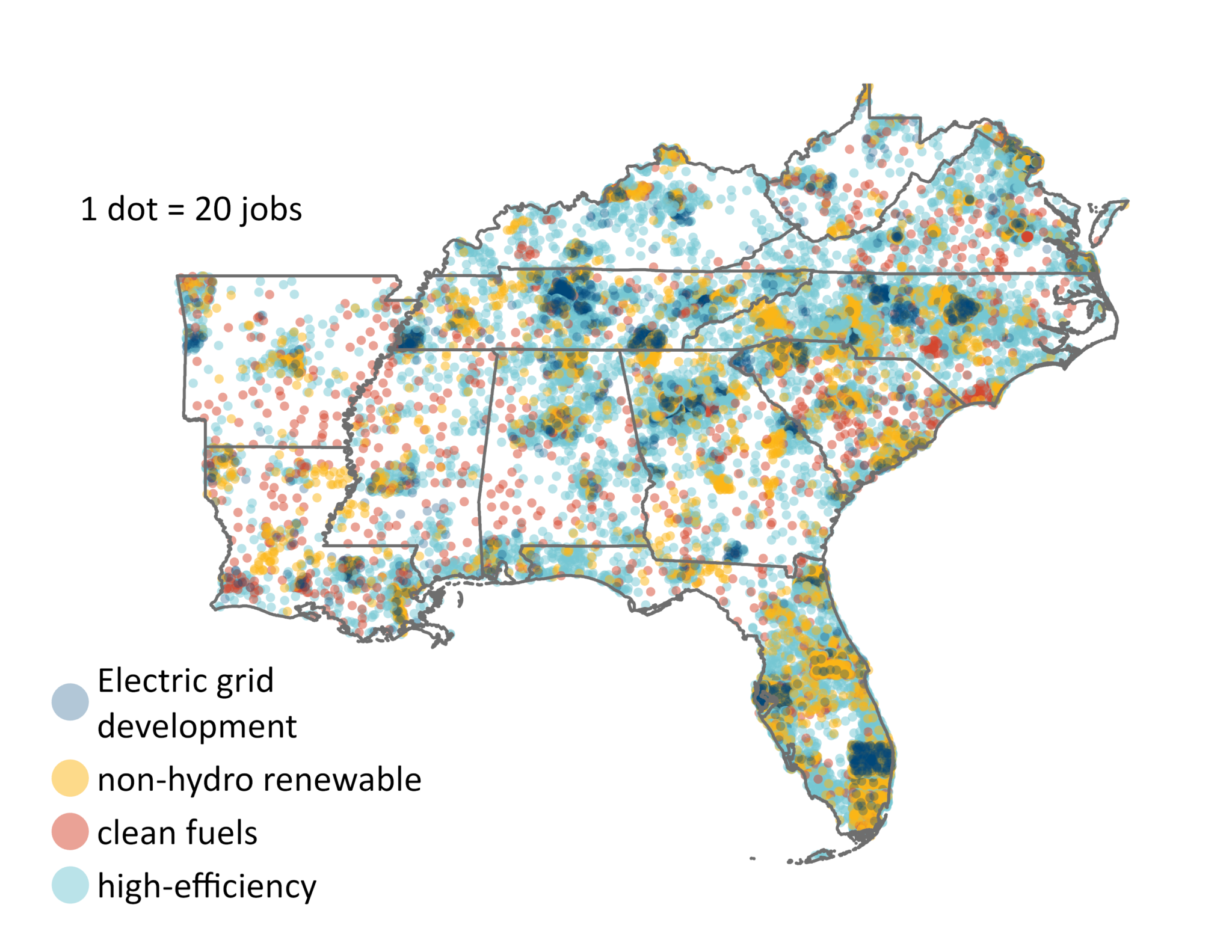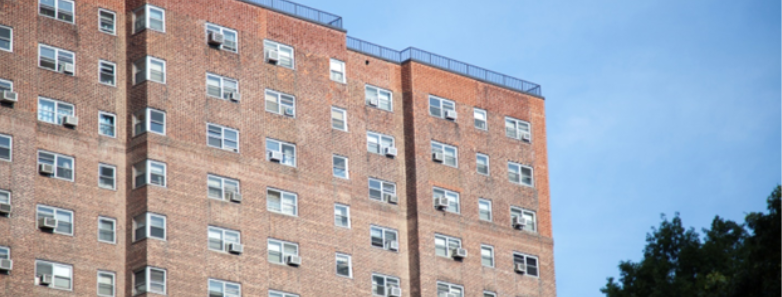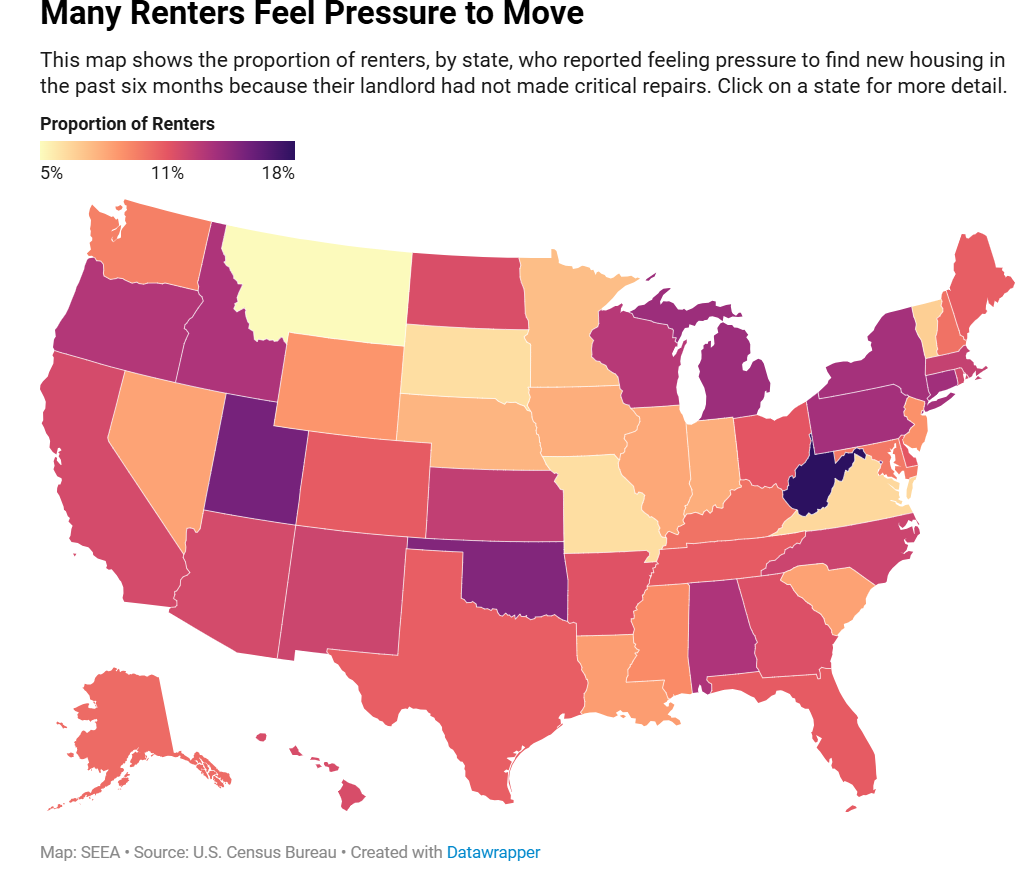Building Performance Standards (BPS): Driving Energy Efficiency and Decarbonization in Existing Buildings
As cities and states across the U.S. begin implementing ambitious climate plans, Building Performance Standards (BPS) are emerging as a powerful and effective policy tool. By focusing on improving the energy efficiency of existing buildings, BPS policies fill a gap that traditional building codes—primarily aimed at new construction—fail to address.
Why We Should Insulate Homes
Building insulation is a critical component of energy-efficient design, providing resistance to heat flow to enhance the overall comfort and efficiency of a home. Proper insulation helps maintain a stable indoor temperature, reducing the need for heating in the winter and cooling in the summer. This not only improves comfort but also significantly lowers energy bills and decreases environmental impact by reducing energy consumption.
December Map of the Month
By Laura Diaz-Villaquiran Source: U.S. Census Bureau – American Indian, Alaska Native, and Native Hawaiian Areas (AIANNHAs). U.S. Department of Energy – Low-Income Energy Affordability Data Tool (LEAD). Native American communities […]
Nonprofits for unincorporated Norcross acquire $19.95 million EPA Community Change Grant
The Lucky Shoals Community Association (LSCA) – with partners Gwinnett Housing Corporation (GHC), Georgia Hispanic Construction Association (GHCA), and Southeast Energy Efficiency Alliance (SEEA) – have acquired a $19.95 million Community Change Grant from the U.S. Environmental Protection Agency.
2024 Southeast Energy Summit Member Testimonial
As a new SEEA member, I was excited to experience for myself all of the great things I had heard about the Summit from my colleagues in the region. I was also eager to see if anyone else was feeling uncertain about how the incoming administration might affect our industry.
November Map of the Month
This month’s map uses data from the United States Energy & Employment Jobs Report (USEER) from 2023 to explore the extent and impact of the clean energy workforce in the Southeast. It illustrates that clean energy is a significant source of jobs in most counties in the region, and calls attention to how diverse these jobs are across sectors and job type.
Southeast Energy Efficiency Alliance Announces 2024 Summit Award Winners
The Southeast Energy Efficiency Alliance (SEEA) announced the winners of the 3rd Annual Summit Awards today, Thursday, November 21, during the 2024 Southeast Energy Summit. The Summit Awards recognize individuals and organizations forging a more equitable, efficient energy future in the Southeast.
Room to Breathe: Lessons from Atlanta’s First Healthy Housing Program
SEEA is excited to share the results of the Room to Breathe pilot program that we led alongside the Atlanta Volunteer Lawyers Foundation (AVLF) and SK Collaborative. Room to Breathe, which ran from 2021 to 2023, was the first healthy housing program in the City of Atlanta to provide low-income renters with efficiency and healthy housing assessments.
October Map of the Month
On July 1, 2024, Georgia’s Safe at Home Act went into effect. Passed earlier this year, the law establishes that for any lease signed after July 1 Georgia landlords have a “duty of habitability” and must ensure that their rental unit is “fit for human habitation.” This includes maintaining a safe and healthy property and addressing tenants’ maintenance requests in a timely manner, and it gives tenants legal recourse if these conditions are not met.
Buildings Blueprint (3rd Quarter)
Welcome to SEEA’s Buildings Blueprint where we provide updates and resources on buildings and energy codes in the Southeast and U.S. Islands.


